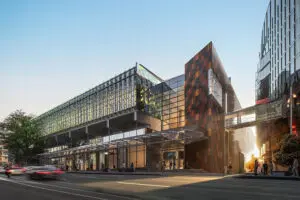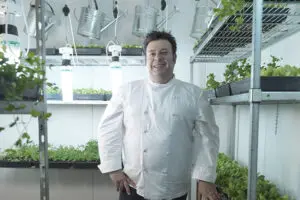With flight capacities between Japan and many destinations restored, Japan National Tourism Organization (JNTO) and several prefecture partners are stepping up marketing activities to draw business events, including from Australasia.
Japan was prominent among exhibitors at ITB Asia and IMM Asia in October and the country will be represented at AIME again in February 2024.
At ITB Asia, Shibuya MICE Association promoted Shibuya as an entertainment city, aiming to host business events with the community as a whole. Current target markets for the destination are Singapore, US, UK and Australia.
Bellustar Tokyo and Hotel Groove Shinjuku, which both opened this May in Tokyu Kabukicho Tower, encapsulate the vibrance.
Jane Saori Yamada, director of Tokyu Hotels and Resorts sales office in Singapore, who oversees the Australian market, cited the recent Serandipians Grand Asia Tour event at the Entertainment Food Hall, where 100 travel professionals from around the world enjoyed an immersive experience and visual showcase of the venue as an example of what’s possible. Bar-hopping tours can also be arranged for small groups.
Yamada added: “Our primary target markets include the Asia Pacific, strategically focusing on participation in industry-leading events such as AIME 2024 for effective exposure and promotion. We see 2024 as a year of focused growth, bringing together luxury, functionality and strategic promotion for sophisticated business travellers.”
Kyoto, designated a “Global MICE Strategic City” by the Japanese government in 2013, positions itself as the cultural capital of Japan. It blends 1,200 years of history with constant innovation and research institutions.
Kyoto Convention & Visitors Bureau (KCVB) extends omotenashi (hospitality) to event planners and participants, including financial and physical support for organisers from bidding to execution.
KCVB recommends a three-day program, although some MICE groups opt for a day or two-day extension of their main program, as the city is 140 minutes by bullet train from Tokyo and only 35 minutes from Nagoya.
Fukuoka and Kitakyushu on Kyushu island are also wooing incentive groups with creative itineraries and subsidies for organisers. Fukuoka contrasts historic ruins and temples with digital art, green tea and sake brewing. In Kitakyushu, attractions include Kokura Castle, kimono and tea ceremonies and local speciality food such as udon noodles and puffer fish.
Up north, Sapporo is attracting international conferences. The Adventure Travel World Summit in September, its first time in Asia, recorded 773 attendees. Several scientific and technical conferences have also been hosted this year.
“For incentive programs, ensure advance planning and scheduling during peak seasons like the Snow Festival,” said Aya Sugimoto, manager of incentives and corporate events at Sapporo Convention Bureau.
“There are many interesting opportunities throughout the year, such as floral themes in May-June, dance in June and beer in July-August – and year-round attractions like the indigenous Ainu culture and seafood feasts.”




















